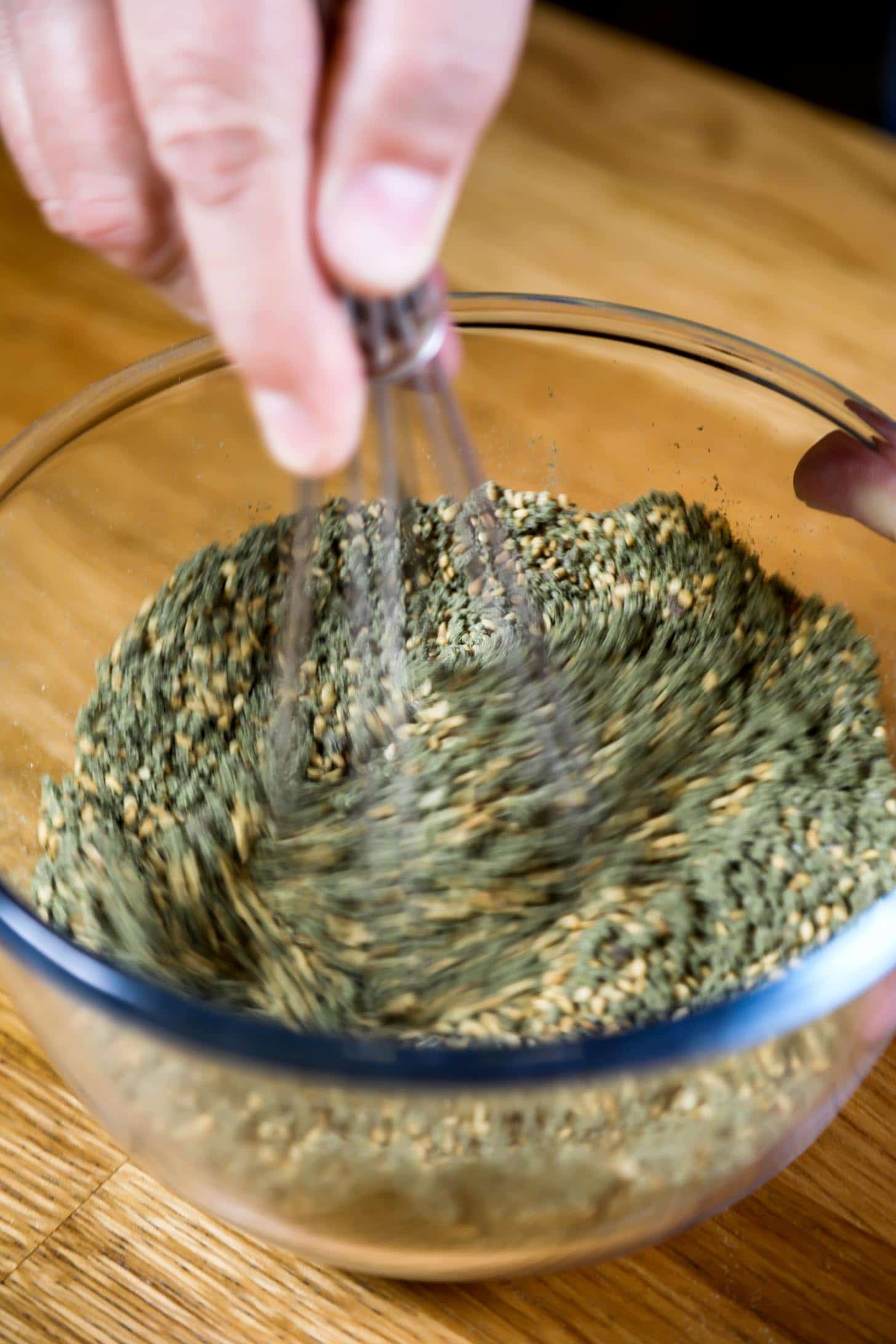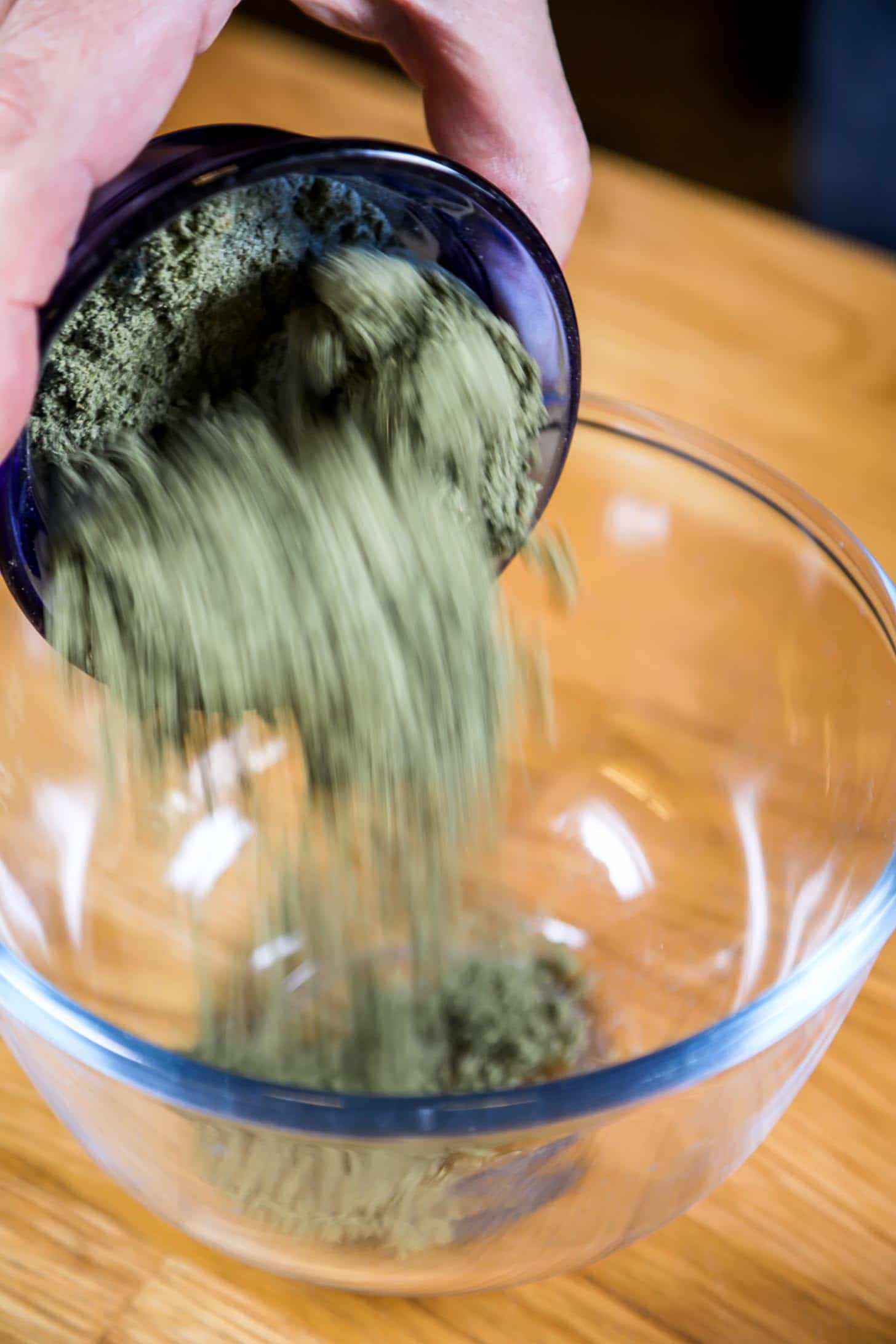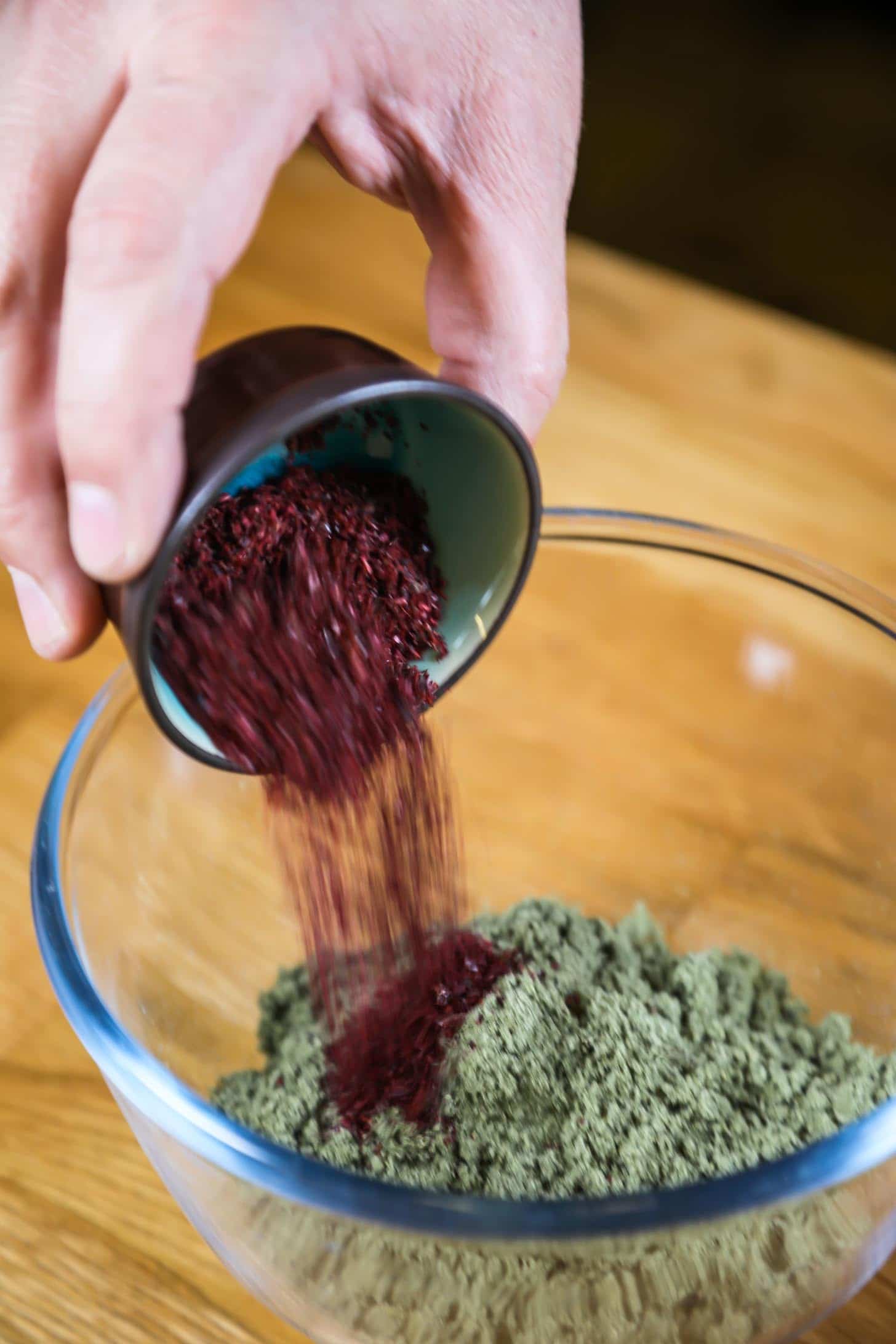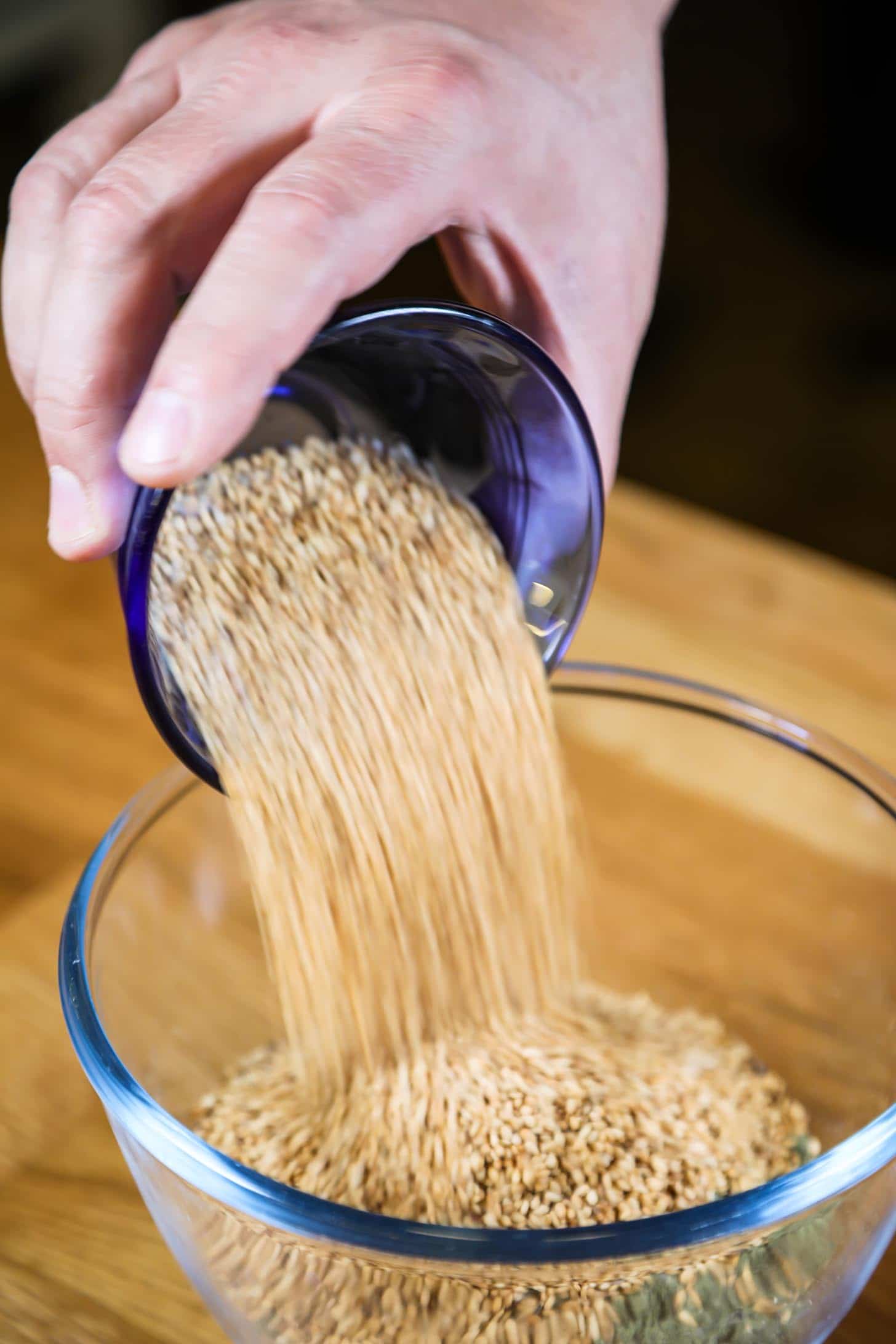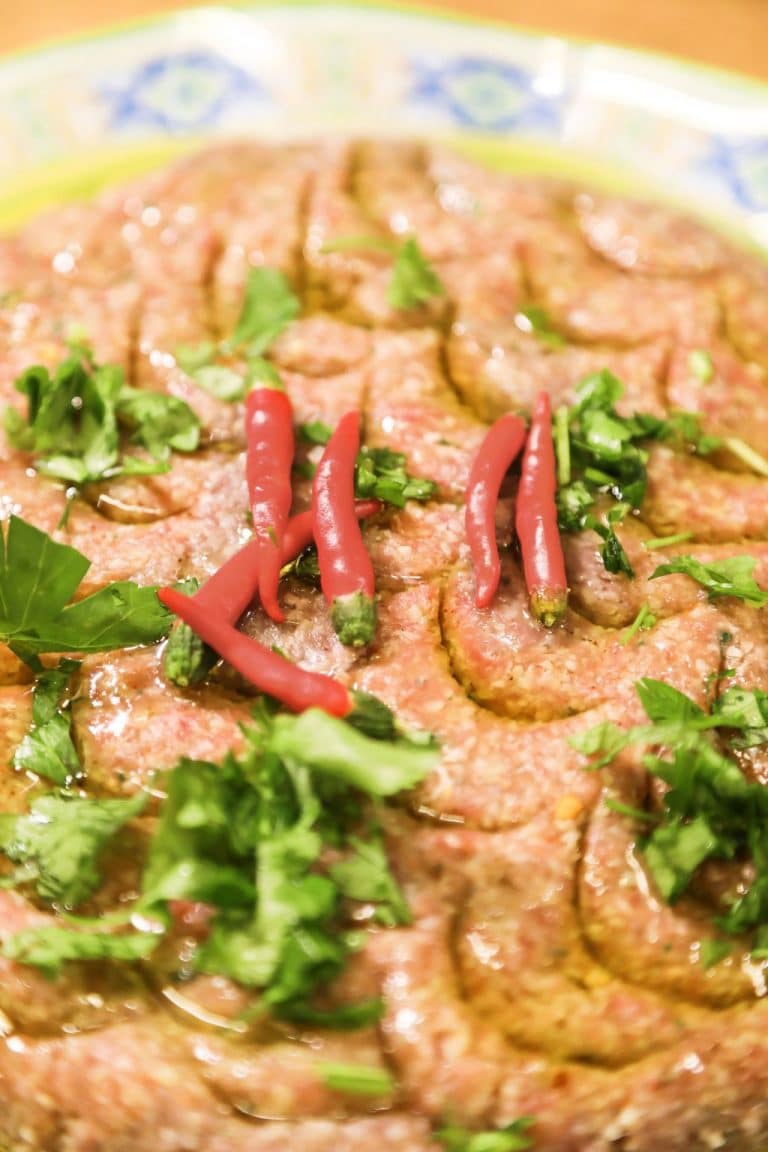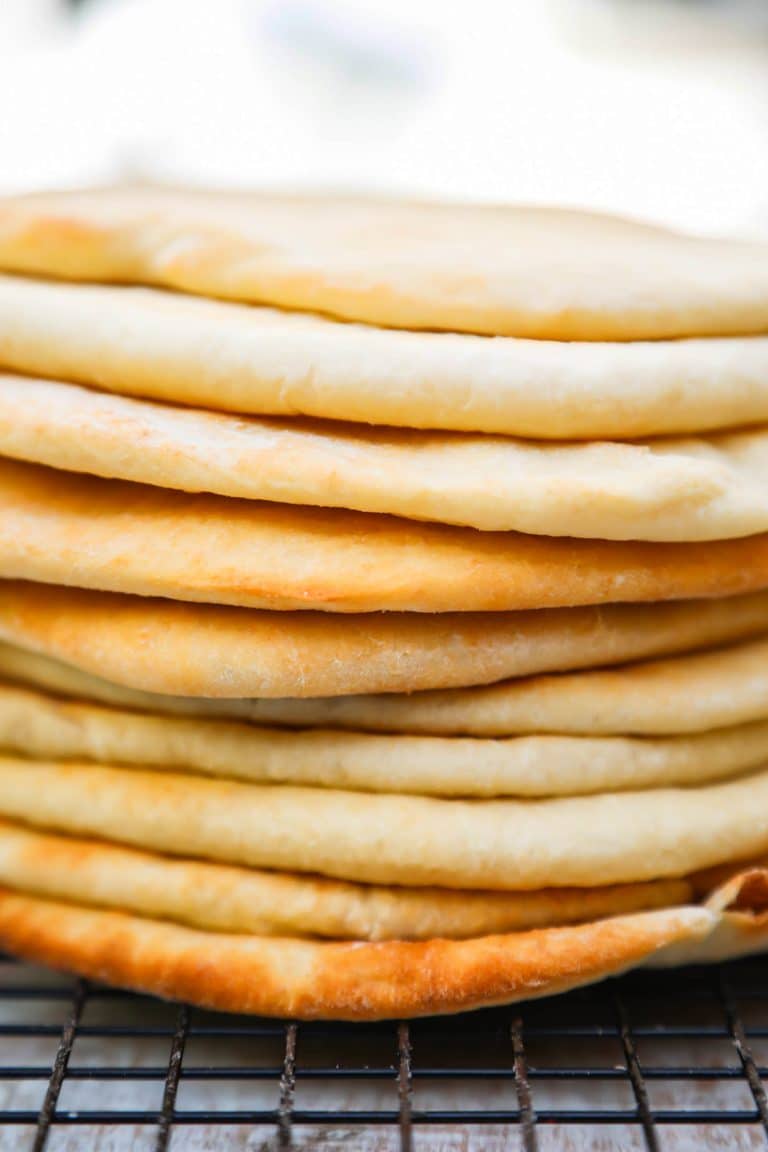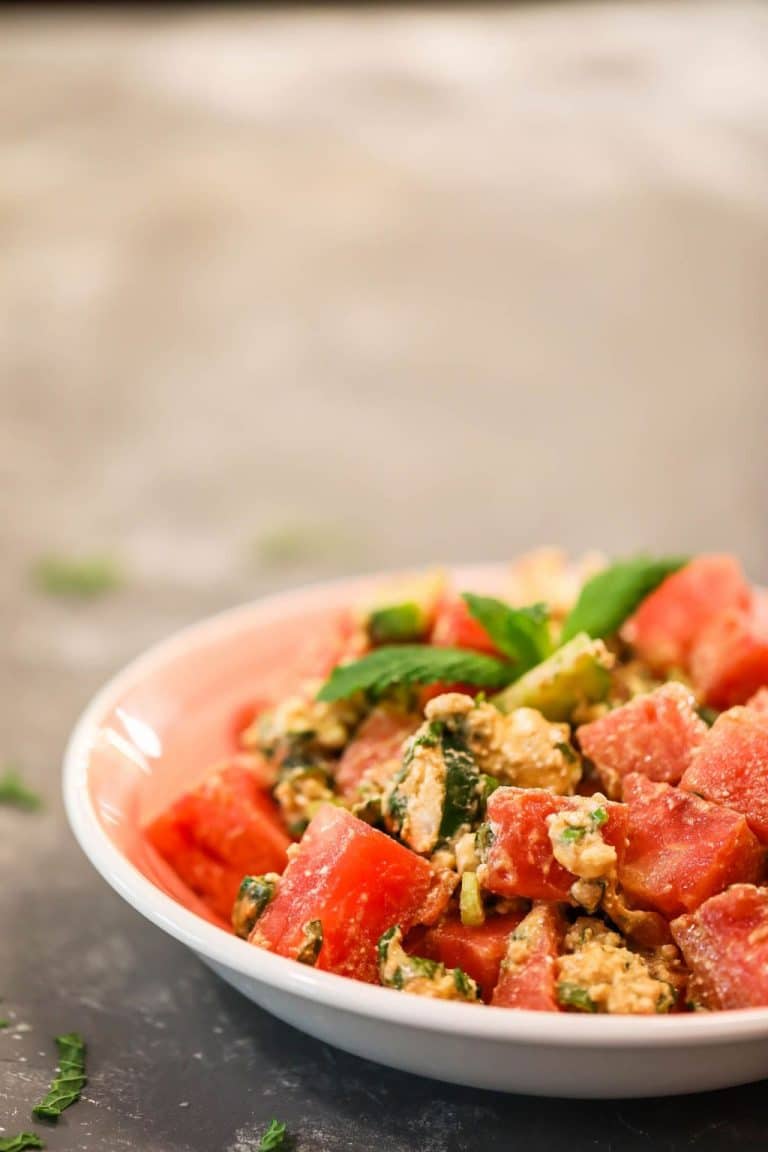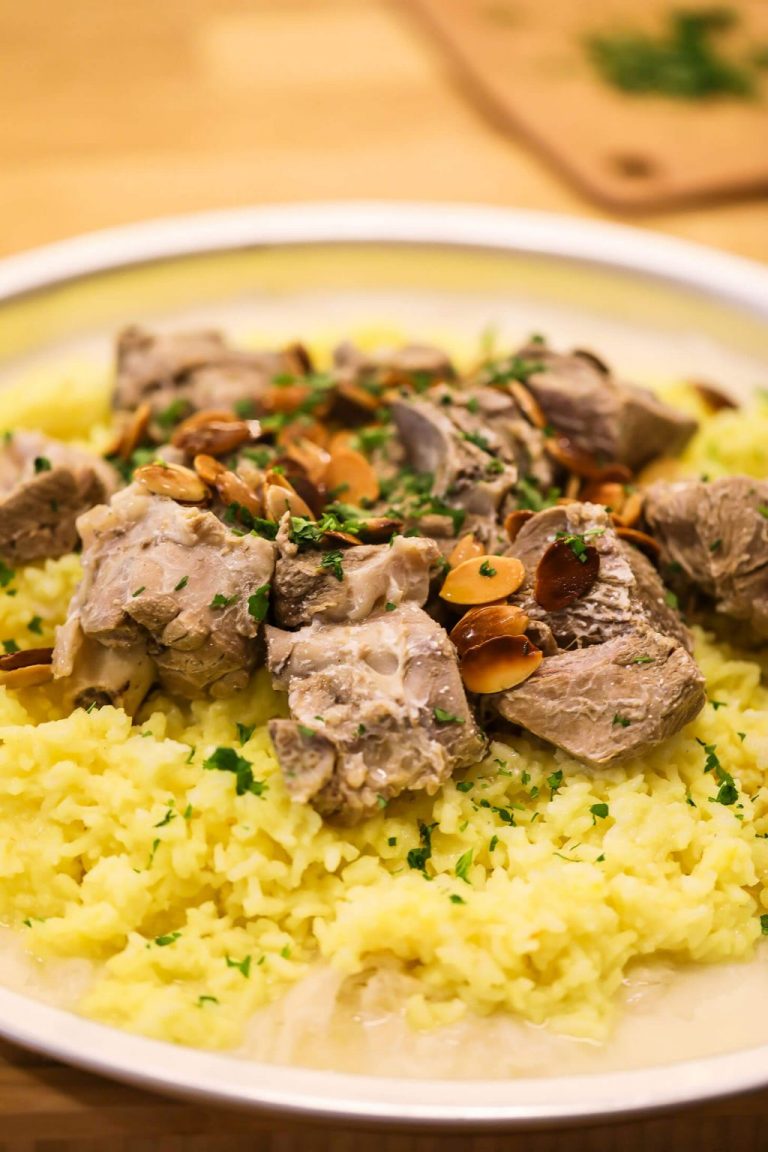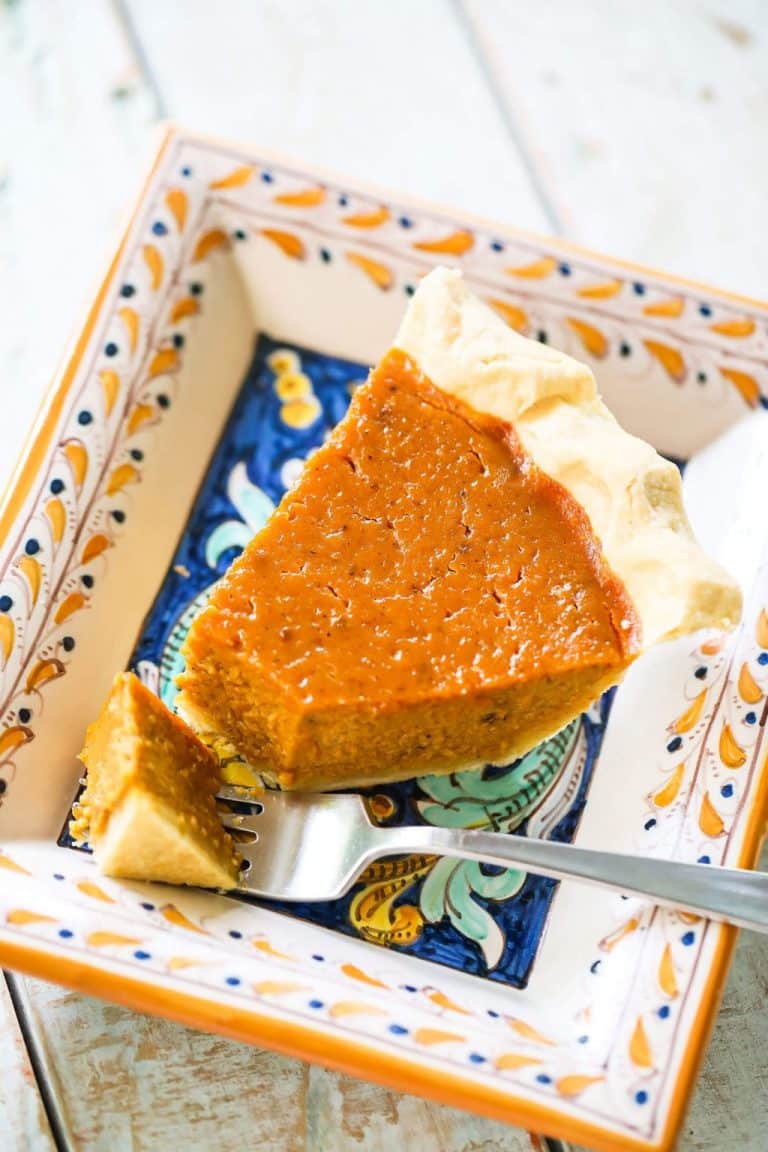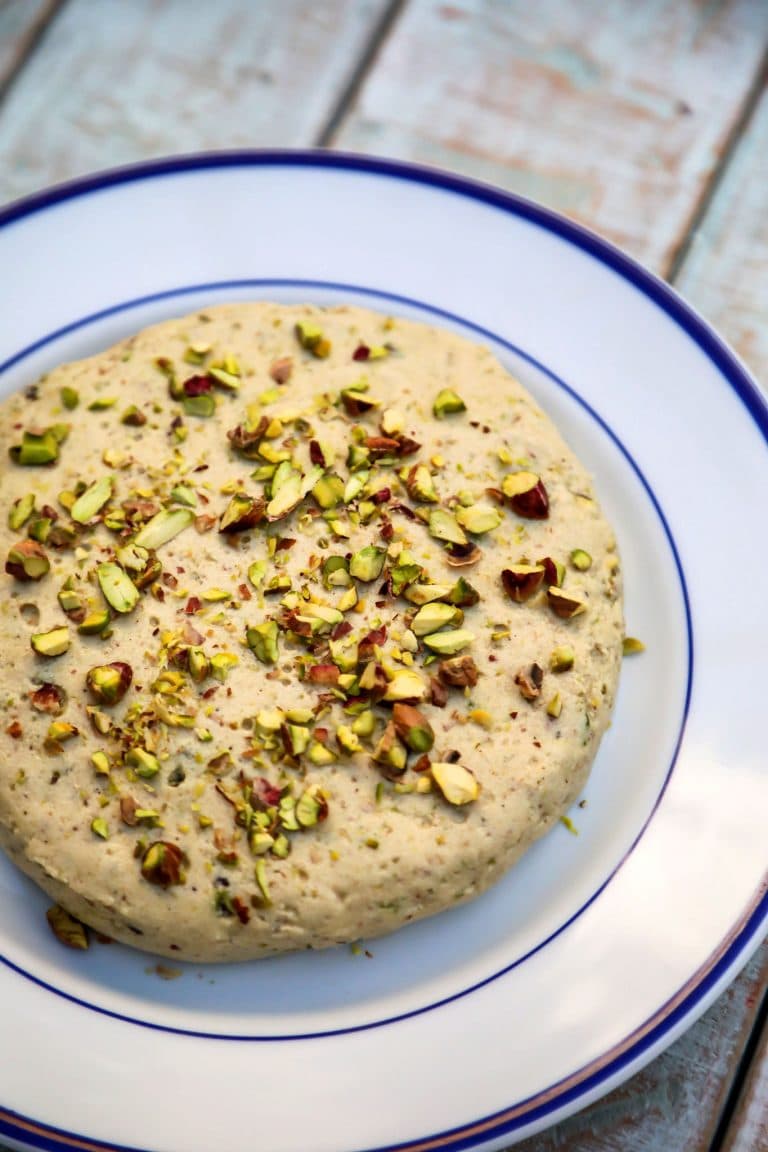Za’atar (Herbal Spice Mix for Life)
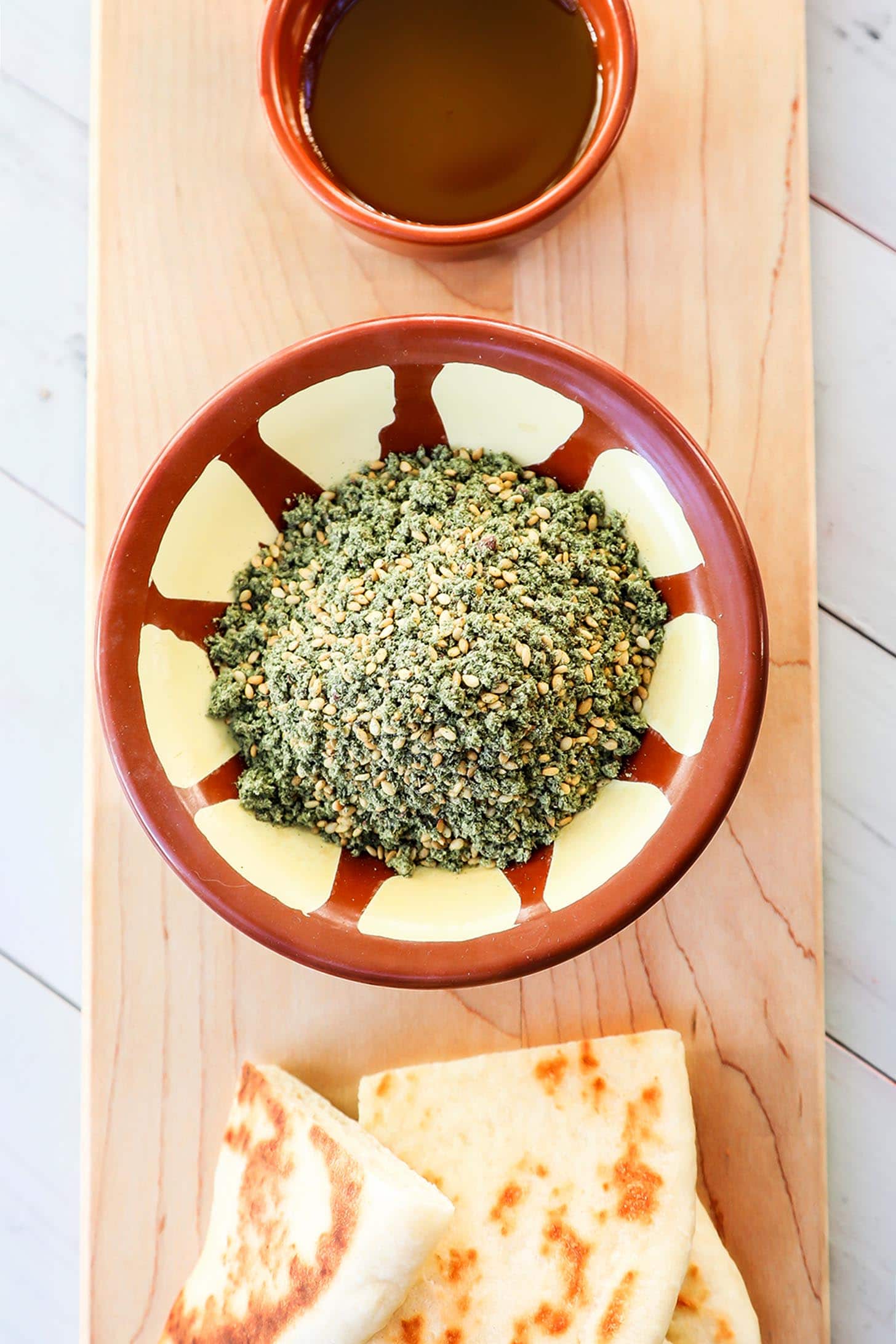
Za’atar is a mix of herbs and spices that is an indispensable part of a typical Middle Eastern breakfast.
Easily one of the tastiest mixes of herbs and spices you’ll eat when you are in the Arab world.
However, the za’atar plant is a somewhat misunderstood herb in other parts of the world, and identified by different names.
What Exactly is Za’atar Anyway?
Za’atar is the name of a plant, an herb, that is native to the Middle East, and grows wild there.
Often referred to as a za’atar spice blend, mix, or dip, it is technically not fully a spice mix.
The word za’atar is an Arabic word that refers to the plant, as well as to the mix that utilizes the herb as it’s main ingredient.
It is said that this plant was referred to in the bible as hyssop, and later described as ‘a wild shrub of unknown identity.’
Today hyssop is a well known plant in the mint family that is used in herbal medicine as a cough reliever.
Za’atar, also a member of the mint family, is in fact a species of wild oregano, sometimes referred to as Greek oregano.
Many translations of zaatar to English have been recorded as thyme, which incidentally is also part of the mint family.
Thyme does not have the same flavor, and has been mislabeled for a long time.
The herb that goes into za’atar mix is indeed dried oregano that is indiginous to the Middle East.
How to Make Za’atar Dip
In the Middle East it is easy to find the herb za’atar, and it is even easier to grow in your backyard.
The first step is to dry your oregano thoroughly which will usually take a couple of days.
It then needs to be ground, which can be done in a couple of different ways.
Traditionally this would be done with a mortar and pestle, and today I use a spice grinder.
Za’atar is a favorite spice mixture, and like many Middle Eastern spice recipes it has regional variations.
The differences are usually in the quantities of ingredients, but there are also additions in some cases.
After I dry and grind my za’atar, I simply add ground sumac berries, toasted sesame seeds and salt.
And that’s it, wildly easy to make, and delicious to eat, found in grocery stores but so much better to make yourself.
Traditionally eaten with pita bread and olive oil, this mix of dried herbs and spices is fantastic.
What Else Can be Done with Za’atar?
As I mentioned, za atar recipes vary from area to area, and country to country, and in some cases have little to do with za’atar itself.
In the US I’ve come across ‘za’atar’ labeled as dried thyme, or wild thyme za’atar spice.
Sold as either a dip, or additional spicing for cooking, which is all good and well, but does not actually have za’atar in it.
Just a word of warning to check ingredients to make sure you get what you are looking for.
A very popular thing to do with za’atar is to mix it with olive oil, spread it on dough and bake it.
This is called manakeesh, and is absolutely delicious and should definitely be tried.
A modern twist on this is that za’atar is being sprinkled on croissant dough and then rolled into croissants.
Wild oregano can also be sprinkled on yogurt or labneh, and included in omelets along with fresh oregano.
Another popular use is to add za’atar mix to roast chicken, before or after baking for a tangy twist.
Sprinkle on or marinate kebab along with olive oil, or sprinkle over baked tomatoes.
Try with rice, or seafood, especially shrimp and scallops.
Sprinkle inside ka’ak for a real traditional use of this herb and spice mix.
Benefits of This Herb Mix
Za’atar (wild oregano) has several health benefits such as having antimicrobial and antiseptic properties.
Sumac possesses cancer fighting properties, along with being an antiviral and antifungal agent.
Sesame seeds can help lower blood pressure, reduce inflammation, and support healthy bones.
It’s a good source of vitamin B, fiber, and plant protein as well as rich in antioxidants.
These ancient blends always have a lot of goodness and nutrition to them.
Some Regional Differences
Za’atar can be different from country to country, with the biggest differences being in ingredients ratios.
In places like Jordan the recipe is pretty classic with wild oregano, sumac, sesame seeds and salt.
The Syrian mix will often include coriander and cumin and perhaps crushed cashews and peanuts.
In Lebanon, caraway or anise seed is included, and sometimes a little orange zest.
Find the one you like or mix and match and make it for yourself!
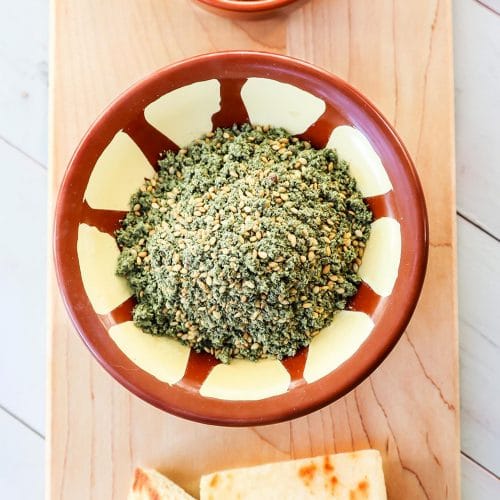
Za'atar Recipe
Ingredients
- ¾ cup Za'atar (Wild Oregano) ground
- 1 tbsp Sumac ground
- ¾ cup Sesame Seeds roasted
- ¾ tsp Salt
Instructions
- Mix all ingredients together, and serve.

